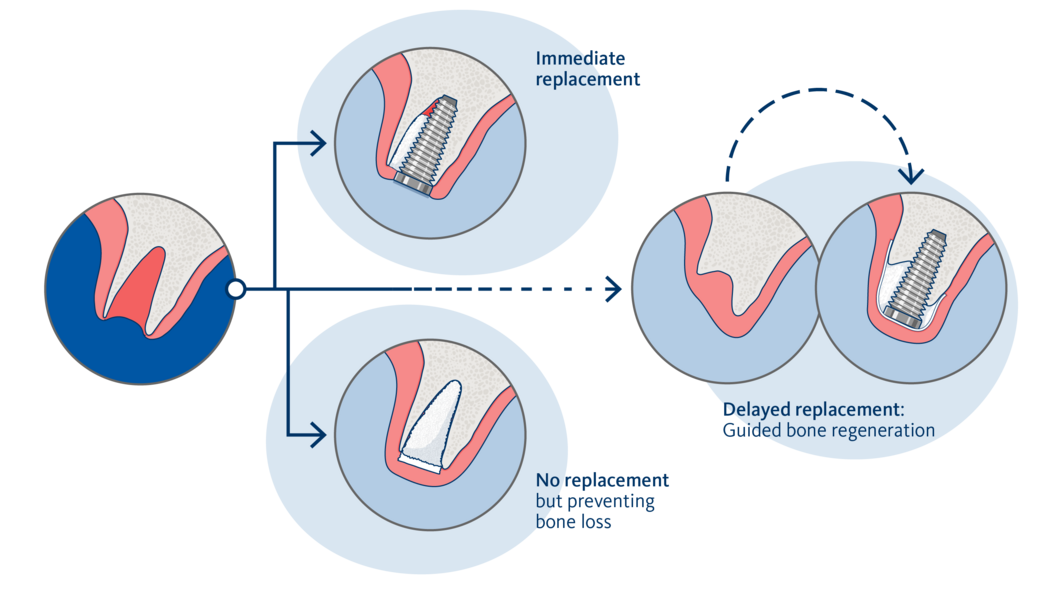Immediate Replacement: placing an implant immediately after a tooth has been pulled out requires advanced surgical skills. When a tooth is removed, the hole left by the tooth is bigger than the implant. So, the space around the implant is filled with a bone filler to stabilize the implant and avoid bone loss. Over time, the bone graft integrates itself into the jawbone. It’s worth noting that this option is not advised in all cases, especially if you have thin or damaged bone walls, or thin gum tissue.
Delayed Replacement: dentists often prefer to wait a little while before they place an implant. This allows the empty socket to heal. When the time comes to place the implant, they can rule out any further bone volume loss. The already lost bone can be compensated with a surgical bone augmentation in which they add a bone filler material and a protective membrane. This procedure is called guided bone regeneration and is very common.
No replacement but preventing bone loss: a bone filler material can be inserted into the empty socket after the tooth has been removed. This approach is used to maintain the volume and bone of the ridge to avoid invasive re-building of lost bone later on until the patient decides to replace the lost tooth with an implant or bridge restoration.

